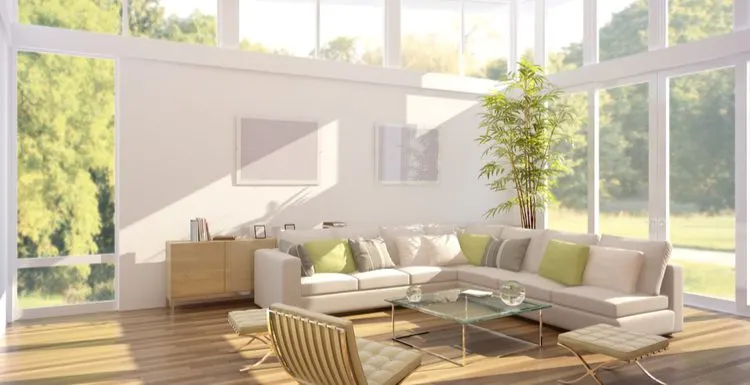Considering bamboo flooring for your home? It’s affordable, strong, and eco-friendly.
Read on to learn what it costs, its benefits, a few downsides, and why we think it’s a great consideration for any home.
What Is Bamboo Flooring?
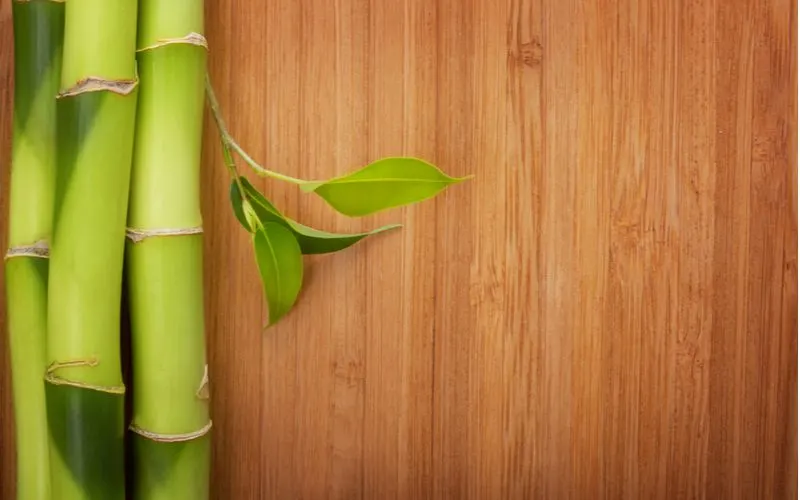
Valentine Razumova/Shutterstock
Bamboo flooring is an affordable alternative to traditional hardwood flooring. It’s one of the most eco-friendly flooring options for your home and can look amazing for years with minimal maintenance.
It’s a fantastic alternative to traditional hardwood or carpet in almost any room in your home.
Bamboo floors are an engineered flooring product. Strands of bamboo grass are shredded, pressed together, and heated to create the planks for your floor.
The manufacturers press the boards in three distinct ways. You can choose between vertical, horizontal, and strand-woven. Each offers a unique style and benefits.
Vertical
Vertical bamboo flooring uses strands of bamboo that have been glued together vertically.
This process creates a thin-grained appearance for each board.
Horizontal
If you prefer a wide-grain appearance, consider using horizontal bamboo flooring.
The boards use horizontal strands of bamboo to create a wider grain appearance.
Strand-Woven
If durability is a concern, strand-woven bamboo flooring is a great option.
Strand-woven bamboo is far more durable than vertical and horizontal bamboo. It’s ideal for use in high-traffic areas in your home.
Bamboo Flooring Surface Styles
You can choose from different surface styles when picking a bamboo floor, allowing you to choose one that matches almost any style and visual aesthetic.
- Flat or smooth floors are untextured. They offer a soft and smooth feel. These floors may show wear and tear compared to others.
- Wirebrushed flooring has a distressed appearance. It is more durable than flat flooring and less slippery.
- Handscraped floors help you achieve a cozy and vintage appearance. These floors are incredibly durable and will reduce scratching and scuffing.
- Antiqued finished floors add stain and knife-cut effects to the flooring. This flooring style can hide nicks and scratches well.
Choose a Finish
You can choose from factory finish, oil finish, and unfinished surfaces as well.
- Factory finishes are durable clear coats. They provide excellent wear resistance.
- Oil finishes offer a matte, vintage appearance. An oil finish protects against scratches and is ideal for homeowners looking for distressed, textured flooring.
- Unfinished boards give a more custom look, which allows you to apply a custom stain to finish your floorboards.
What to Look for When Buying
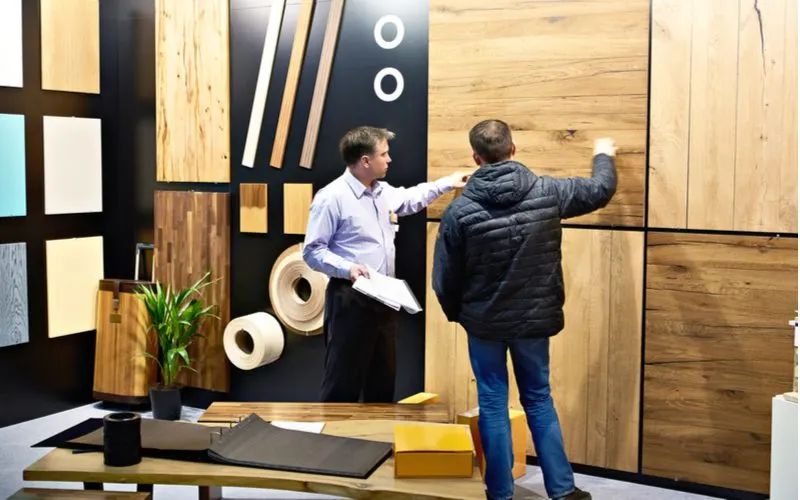
Sergey Ryzhov/Shutterstock
When choosing a bamboo floor, there are a few different properties you’ll want to consider.
Thickness and Width
You’ll find solid boards offer ½ to ⅝ inches of thickness. Most engineered boards come in sizes from ⅜ to ½ inches.
Most solid bamboo boards come in 3 ¾ inch width. Newer options are available that offer a much wider board. You can find wide boards up to 6 inches wide.
Hardness
Manufacturers use the Janka hardness scale to measure wood floor hardness.
For comparison, cherry is 4.2, oak is 6.0, and maple is 6.4. Vertical and horizontal bamboo flooring offer a hardness score of 6.2, beating most other hardwoods.
Strand-woven bamboo is exceptionally strong and more than doubles the strength of maple at 15.8. It’s ideal for high-traffic or high-impact areas.
Air Quality
Not all bamboo flooring products are equal. During manufacturing, bamboo has resin applied to hold the board together.
Unfortunately, many manufacturers will use cheap and toxic resins that contact VOCs or formaldehyde.
These toxins can have adverse health effects on you and your family. To mitigate this risk, look for GreenGuard or Floorscore-certified bamboo products that won’t emit VOCs.
Pros and Cons of Bamboo Floors
While bamboo flooring is great in many ways, it also has its downsides.
We’ll cover both below.
Pros (What We Like)
- Compared to traditional wood, bamboo is a highly renewable material, making it extremely eco-friendly.
- There are inexpensive bamboo flooring options.
- Bamboo flooring offers tough and durable finishes.
- You can install bamboo flooring by floating it or fixing it to your subfloor.
- Extremely easy to clean and maintain.
- Bamboo floors come in a variety of colors and surface styles to match any room’s aesthetic.
Cons (The Downsides)
- Since bamboo isn’t waterproof, it isn’t great for use in bathrooms or wet areas.
- Exposure to humidity can cause bamboo to warp.
- Inexpensive bamboo flooring products are prone to scuffs, scratches, and scrapes.
- Cheap bamboo flooring may potentially contain toxic chemicals that can cause health issues.
Why It’s Eco-Friendly
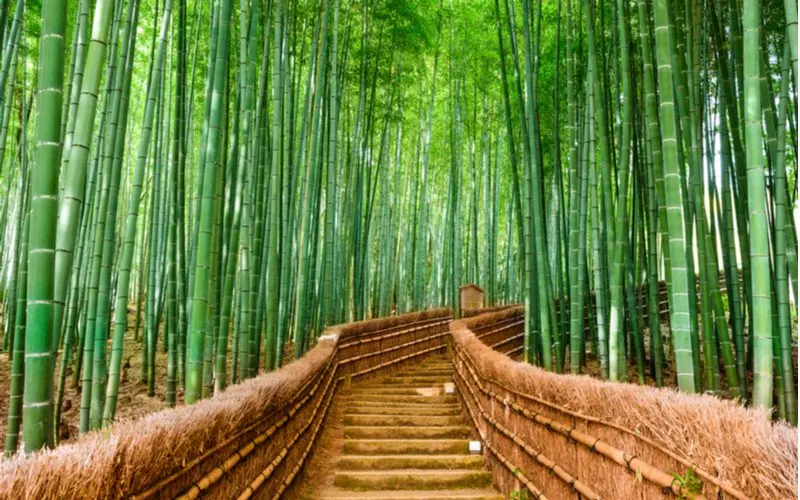
Sean Pavone/Shutterstock
Bamboo plants grow incredibly fast compared to traditional hardwoods. A bamboo plant can reach maturity in as little as three years.
Compared to the decades that hardwood needs to grow, bamboo seems like the obvious choice for eco-friendly flooring. Unfortunately, there are also some downsides to using it.
Bamboo is manufactured overseas and requires shipping over thousands of miles to get to your home. This distance causes many manufacturers to have a large carbon footprint.
Sadly, many bamboo forests have been mistreated and are often illegally cut, causing environmental problems. You’ll also find that many of the cheaper bamboo flooring products are glued together with toxic chemicals.
Volatile organic compounds (VOCs) and other toxic adhesives used in production can cause serious health issues for you and your family. As an example, check out the Lumber Liquidators fiasco.
Buy from a Reputable Dealer to Ensure Your Flooring Is Sustainable
As a former property manager, I’ve bought a lot of flooring. I’ve found that local flooring store owners have a deeper understanding of their products and supply chain.
Big chains often just push whatever they’re told is the highest-margin product.
To ensure you purchase safe and renewable bamboo, look for products certified by the Forest Stewardship Council. The FSC strives to protect nature and the conservation of forests.
Bamboo Flooring Cost
One of the best advantages of using bamboo flooring is its cost.
You can expect to pay $3 to $8 per square foot of flooring. Expect to save a few dollars if you choose bamboo over more expensive solid hardwood floors.
While installing a bamboo floor can be a DIY project, expect to pay $3 to $5 per square foot for professional installation, in addition to the cost of materials.
If you’re a DIYer or handyman, you’ll be happy to know that it’s relatively easy to install.
You can install your new floor directly onto the subfloor. Bamboo floors also come in both floating and fixed installation options.
How to Clean Bamboo Floors
Cleaning and maintaining your new bamboo floors is relatively easy.
Regularly cleaning your floors prolongs their lifespan and keeps them looking amazing for years.
With proper care and maintenance, many bamboo floors can last more than twenty-five years.
Sweeping your floor once every few days reduces the risk of grit, grime, and dust scratching or damaging your floors.
To clean your floors:
- Use a vacuum, microfiber mop, or soft bristle broom, and sweep debris and dust from the floor.
- Mopping weekly with a hardwood-rated cleaner will protect and maintain the floor’s surface.
- Avoid ammonia, vinegar, or acid-based cleaning products.
- When waxing your floors, you should only use products recommended for your floorboards.
- Immediately clean up spills to help prevent stains.
Of course, with proper care, your bamboo floors could last a lifetime. But use common sense.
As with anything, if you take overall good care of it, it’ll take good care of you.
Frequently Asked Questions
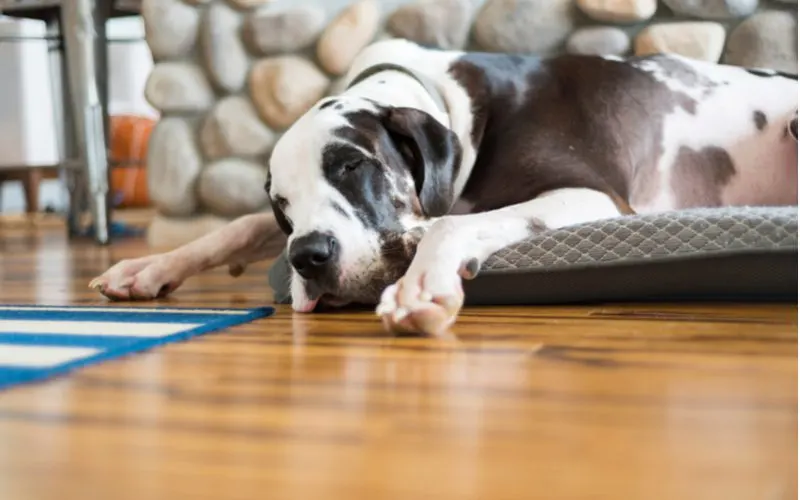
SeaRick1/Shutterstock
While bamboo floors have been around for decades, they’re relatively new in the States.
We’ve rounded up a few of the most frequently asked questions to help you decide if these floors are right for your home.
Do Bamboo Floors Scratch Easily?
Most bamboo flooring is tougher and has greater scratch-resistance than traditional hardwoods.
Strand-woven bamboo floors are some of the most rigid flooring materials available.
What Are the Problems with Bamboo Flooring?
Cheap bamboo floors may scratch and scuff. They can also emit VOCs that can cause health issues in your home.
Bamboo isn’t waterproof and is prone to damage from water and humidity. Many homeowners won’t like the contemporary appearance of bamboo floors.
How Long Do Bamboo Floors Last?
Most bamboo floors can last 20-25 years.
With proper cleaning and maintenance, a bamboo floor can last up to 50 years, if not longer.
Is Bamboo a Good Choice for Kitchen Flooring?
Bamboo can withstand high traffic and impacts, making it a perfect choice for kitchen floors.
It’s also easy to clean and maintain.
Can Dog Nails Scratch Bamboo Floors?
Bamboo floors are durable and harder than traditional hardwood flooring.
Your pet claws will leave fewer scratches and marks on the floors compared to most other flooring options.
Are Bamboo Floors Right for You?
Bamboo floors have quickly become a hot item for many homeowners.
They offer excellent durability and great looks, along with numerous benefits compared to other flooring materials.
If you’re ready to upgrade your floors, consider bamboo flooring!

